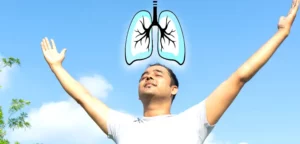A lung transplant is a major surgery and is usually the last resort when a persons lungs cannot support their life system. It involves a complex series of preparative steps and precautions for recovery. Along with this, the recipient has to make major changes to their lifestyle and diet to adapt their body to the surgery.
The article below follows a detailed account of lung transplant recovery, risks, and all other aspects of the procedure.
A lung transplant is often only prescribed to individuals whose lungs are severely damaged and not responding well to any other treatment method. This could be caused by an infection, inflammation, physical trauma, a chronic disease, or similar conditions.
To prepare for the surgery, the doctor performs several diagnostic tests and, based on the particulars of the patient, looks for the most suitable donor.
Supervising an experienced pulmonologist and taking the necessary precautions and care during lung transplant recovery can increase the chances of a successful surgery and impart a longer life expectancy to the recipient.
What Are The Types Of Lung Transplants?
Based on the number and portion of the lung to be transplanted, this surgery is of four types:
1. Single Lung Transplant
In this surgery, only one Donor Lung is implanted in a recipient’s body. Here, the surgeon replaces one lung with a healthy one while the other is left untouched. Comparatively, it is easier to get donors for a single lung transplant surgery.
2. Bilateral Lung Transplant
Also called sequential or double lung transplant, it involves the surgeon removing both lungs with a pair of healthy donor lungs. Finding a matching donor for this surgery is usually more difficult.
3. Lung Lobe Transplant
Here only a lobe is taken from the donor. However, as single lobe is never adequate for recipient, we need to take lobe each from both sides so that the recipient gets at least two lobes, which equals nearly to a single lung
4. Combined Lung And Heart Transplant
Some conditions like pulmonary hypertension affect both the heart and the lungs of an individual. The surgeon performs this compound transplant in such cases. 9 Tips For Healthy Lung Transplant Recovery
Who Needs A Lung Transplant?
A lung transplant is performed when the lungs of an individual have suffered irreversible damage. Apart from physical trauma and injuries, this could be caused by the following medical conditions.
- Chronic Obstructive Pulmonary Disorder (COPD)
- Pulmonary Fibrosis
- Pulmonary Hypertension
- Cystic Fibrosis
How To Prepare For Lung Transplant?
A lung transplant involves several preparatory steps. These involve a proper diagnosis of the recipient and ensuring they are healthy enough for the surgery, finding a suitable donor, and going through the legal requirements.
Here is a more detailed account:
- Diagnosis involves imaging tests like x-rays and CT scans, blood tests, pulmonary function tests, and lung biopsy
- Female recipients might have to go through gynecological evaluation and mammograms to ensure their overall health
- Diagnostic records are included in the list of recipients waiting for a suitable donor
- The donor is tested for factors like blood type, lung size, and overall health.
- Approval from the legal authorization committee, a consent letter, a no-objection certificate, and an affidavit are required before the surgery.
Also Read – How Long Does It Take to Recover from A Lung Transplant?
What Does The Lung Transplant Recovery Involve?
The recipient is put on ventilator life support during the transplant surgery. Hence, after the treatment, the patient is kept in the ICU under the doctors observation. The doctor inserts tubes into the recipients chest to continuously flush out any accumulating fluid from near the lungs.
The medical team keeps a record of how the recipients body responds to the transplant and medications during the lung transplant recovery. When they have recovered enough, the doctor allows them to go home. However, the recipient needs to stay close to the hospital for quick help if any complications arise.
Risks Associated With Lung Transplant
Lung transplant is undoubtedly a lifesaving boon for many individuals. However, like every major surgery, several risks are associated with this procedure. These complications could arise right after the surgery and even months or years after the lung transplant recovery. Hence, it is necessary to be aware of the potential risks.
Some common potential complications include:
- Infection due to contamination during the surgery or improper care of the wound during lung transplant recovery
- Rejection of the donor lung by the immune system immediately or years after the transplant.
- Disruptions in the blood supply due to the surgery could cause a reimplantation response; it leads to symptoms like coughing up blood and shortness of breath.
- The surgery increases the chances of lymphoma, a cancer of the white blood cells.
Life After Lung Transplant
Under proper precautions and care, the success rate of this surgery is approximately 87%. Studies have shown that after the lung transplant recovery, the survival rate for one year is 90% and that for five years is 50%.
Due to the several risks and complications associated with a lung transplant, the recipient needs to take lifelong precautions.
This involves significant changes in eating and lifestyle habits. Some of the necessary changes include:
- Quit smoking, drinking
- Limit the intake of fast food, and include healthy foods in your diet
- Perform endurance and cardiovascular exercises; if you are not used to working out, begin with light practices like breathing exercises and walking
- Follow the doctors instructions and visit for regular follow-ups
- Take the medications as and when prescribed; immunosuppressants are necessary lifelong medications after lung transplant to prevent transplant rejection by the immune system
- Immunosuppressants make you more prone to infections; live a healthy and hygienic life and keep your surroundings clean
Also Read – Precaution For Patients After Lung Transplant Surgery
The Bottom Line
A lung transplant is a lifesaving procedure but comes with significant risks. However, expert guidance from a surgeon with a record of successful surgeries would work in your favor.
Dr. Arvind Kumar is a pioneer of chest and robotic surgery in India. Educated and trained at some of the best healthcare institutions across the world, he has hands-on experience of over 40 years. Dr. Arvind Kumar was awarded the B. C. Roy National Award for his remarkable contributions and insurmountable expertise in the medical field. He is now dedicated to providing the highest-quality treatment to people.

.webp)



